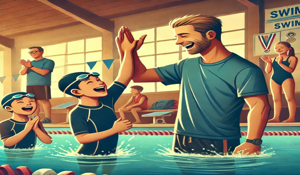
If you delay your child starting kindergarten you are setting them up for failure.
WHAT IS REDSHIRTING?
Parents look for every edge and opportunity to help their child, but some might be taking it too far. There is a practice, mostly used in college sports, of holding a person (child or athlete) back a year to give them an advantage over their peers or to prolong their development so that they are stronger, faster, etc. This practice is called redshirting. While I cannot speak for college athletics, when it comes to a child’s education and development, redshirting will almost always do more harm than good.
REDSHIRTING ONLY HURTS AND NEVER HELPS
Young children need to be challenged and they need to be pushed in the right way to grow and learn. Some parents and teachers advocate for redshirting because they believe that older students will have an easier time in school and thus do better. In fact the opposite is true. If a child is not challenged enough, the school work becomes boring and they become disinterested. The overall performance of a red shirted child lowers with each year and many of them find themselves in remedial classes, repeating a grade, or not finishing school at all. The red shirted child feels the difference between himself and his classmates as well as himself and the students his own age, those being a year above him.
Because school curriculums are designed to fit the ability and maturity of the child, a red shirted child will feel like he or she is being short changed. For example, driver’s education classes are taught in the sophomore year of many high schools. This fits the NJ standard for a provisional driver to be of the age of 16 when they take their test. A child who is red shirted still looks forward to their 16th birthday but will not be able to take their driver’s education course in school for another year. There are options of talking to the school board or paying out of pocket for private lessons through the local DMV. However, that child will still feel like they should be doing more for their age, because they should.
RESULTS OF REDSHIRTING
Some parents and teachers say that students who are red shirted will perform better on tests and in social situations compared to their classmates. This is wrong for a few reasons. First, the child learns new concepts at the same time as the rest of the class. People that believe redshirting is good might say that they’ll learn it and understand it quicker because they are older and smarter. Yet, according to the New York Times, “Learning is maximized not by getting all the answers right, but by making errors and correcting them quickly. In this respect, children benefit from being close to the limits of their ability. Too low an error rate becomes boring, while too high an error rate is unrewarding.”
Second, there are studies that show the negative effects of redshirting on school tests and IQs. Most of these redshirted students do not surpass the benchmark for the grade they are in and often fall below the mark even though they are older than their classmates. There are even instances of children who have been redshirted performing lower than children who are younger than them yet in a grade above them. One study involving 26 Canadian elementary schools showed that first grade students who were young for their year made more progress in reading and math than kindergarten students that were old for their year.
Third, when comparing redshirted students to students who skipped a grade (the opposite of a red shirt), you can see how all the advantages parents try for with redshirting is achieved by grade skipping. Children who skip a grade mature faster both intellectually and socially. This is a byproduct of being surrounded by more advanced classmates. While these children are more mature, there is no risk of “losing their childhood” if the parent makes the effort to maintain a healthy balance of work and play
EXCEPTIONS TO REDSHIRTING
The first exception should be understood fully. There are instances when a child is not developmentally ready for kindergarten. They might not have met all of the social an intellectual bench marks expected for a 5 year old. They also might not be mentally or emotionally ready to start school. In this instance, a child who is kept back a year is not being deprived. Rather the parents have made a difficult decision that their son or daughter is not going to be ready for school this year. This should not be taken lightly and definitely should not be mistaken for redshirting.
The other exception is if the child is born after the cut-off date. In this case it is not a parent who made the decision to keep the child home another year but the school board. Sometimes those guidelines are too stern and hard to work with. Here are some helpful tips to deal with what happens if your child is born after the cut-off date.
Overall, we all want what is best for our children. While the intentions behind redshirting might be kind and good, the results are still the same. It is detrimental to red shirt your child and will only set them up for failure and unfulfilled potential. You should always avoid holding your child back in every capacity. If your son or daughter is struggling developmentally, use home schooling methods, private tutoring, and after school programs. You should never red shirt your child. Lastly, I know there are some opinions of letting the child “be a kid” a little while longer, but that is setting them up to believe there can never be a healthy balance between work and play. This will lead to such a bleak outlook on their futures and that mentality will cripple their academic as well as social success. What it comes down to is any child should never have to choose between work and play. They should have, they need to have, both.
http://www.nytimes.com/2011/09/25/opinion/sunday/dont-delay-your-kindergartners-start.html





